The Book Itself: Four Thoughts on the Enduring Value of the Printed Book
The book itself matters. Beyond the practicalities it offers over ebooks, the printed book carries with it intangible characteristics that we take for granted and wouldn’t miss until long after their absence.
In this post, the author explores the evolution of books in the digital age, discussing the impact of technology on reading and publishing. He reflects on the tactile experience of physical books versus digital formats and contemplates the future of storytelling. The post emphasizes the importance of preserving the essence of reading while adapting to new mediums, highlighting both the challenges and opportunities that come with this transition.
Generated by Azure AI on June 24, 2024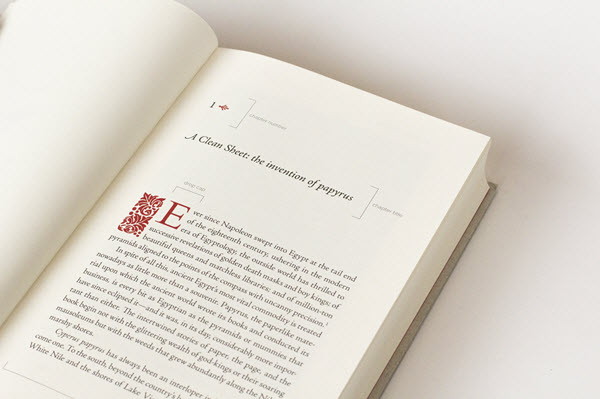
In his book, Double Fold: Libraries and the Assault on Paper, Nicholson Baker describes the “Oversight Hearing on the Problem of ‘Brittle Books’ in our Nation’s Libraries,” that happened on March 3, 1987.
At that event, Lynne Cheney – yes, that Lynne Cheney, who was, at the time, chair of the National Endowment for the Humanities – said this:
Our thrust at the Endowment has been on intellectual content rather than on the book itself.
While the main point of Double Fold is a searing indictment of the movement to digitize paper books, Cheney’s statement stands out for an important reason: she has separated the content of the book from the actual, physical book (…"the book itself.”)
This is a road we’ve been traveling down for years, and in my industry (content management and digital publishing), the idea of “separating content from presentation” has been canon and inviolate. We’ve “lifted” the idea from the thing, perhaps without regard to whether or not the thing was part of the idea in the first place.
Does the thing – the book itself – still have a place in the digital future?
Back in 2007, I purchased one of the original Kindles. It was $399, which wasn’t an insignificant amount of money for me at the time. I justified the expense, however, secure in the knowledge that this was my nirvana. I simply loved books, I read voraciously, and I was tech savvy. I was a natural candidate for an ebook reader. More than that – I was convinced that I was the human embodiment of the market Amazon sought to serve with this device. Purchasing it was almost a philosophical imperative for me. Beyond its practical value, it stood as a symbol to how much I loved reading. With it in my hands, I was the proud vanguard of a new movement.
I sold it a few months later. I think I got $150 for it.
I had just stopped using it, and I wasn’t sure why. I read about a dozen books on the device, then slowly put it aside more and more and returned to paper books. Eventually, I realized that I wasn’t using it at all anymore.
It the months and even years afterward, I was mildly unsettled by this failure. I took it as a personal shortcoming, that I wasn’t able to make it work – as if it required some great amount of skill that I didn’t have. If I couldn’t become attached to a device that was seemingly made for me, what did that say about me, and what did it say about the art and practice of reading?
But what ultimately came out of this experience was the knowledge that “the book itself” matters. Beyond the practicalities or affordances it offers over ebooks (and there are several, along with multiple shortcomings, clearly), the printed book carries with it intangible characteristics that we take for granted and wouldn’t miss until long after their absence, and even then not likely without considerable reflection.
Here, then, is what I have learned about why the book itself will always matter.
First: The Book Itself is Part of the Message
Two of the first books I read on my Kindle were Wikinomics: How Mass Collaboration Changes Everything and Here Comes Everybody: How Change Happens When People Come Together. The two books are about very similar topics – how digital technology has enabled us to work together in ways we could never have done before.
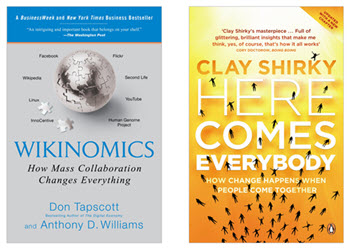
I normally have a great memory for books. I can remember almost every book I read, and I can mentally isolate their arguments, tone, overall message, and how I felt about each one.
But, all these years later, I cannot tell one of these two books from the other. They’re simply jumbled up in my head. I know I read both of them, and I know that they have subtly unique angles on the subject matter, but I can’t tell you what they are. I didn’t retain enough of a “personality” of either book to the point where I can isolate it in my head.
This is one of the consequences of ebooks: the platform succeeds in stripping away the physical nature of books. It takes the originality and levels the playing field, so that everything is the same. It’s like a bunch of Army recruits, fresh from getting their buzz cuts. A huge visual indicator of their uniqueness has been summarily removed.
For example, I realized the other day that I tend to remember passages in terms of “quadrants” – left to right, top and bottom. If I’m paging back through a book, looking for a sentence, I remember where it was, geo-spatially. I’ll flip back through pages, continually look at the top half of the left-hand page, for example, because I can visualize the sentence in that rough space. With an ebook, this is lost. The page itself becomes an abstraction.
The saying that “the medium is the message” might be overstated, but there’s no question that the medium can deeply affect how a message is received and interpreted. Beyond the medium of a book being, well, a book, every book has its own characteristics. There are things like size, thickness, weight, cover design, binding style, paper quality, and paper color tone. These are all physical markers of a specific book. We remember these things and we associate them with the ideas in the book, to the point where our memories straddle a blurry line between physical and mental.
I have two daughters. I’ve looked into their faces tens of thousands of times throughout their lives, and I could pick them out among millions and millions of other faces. But there’s no way I could describe their faces to you in adequate detail for you to do the same. The features that make up their faces have a subtlety and interplay that just can’t be described but has imprinted itself on my brain. This is tacit knowledge (in fact, this example of faces is taken from Michael Polyani’s book: The Tacit Dimension).
Whether we realize it or not, books imprint themselves on our brains through tacit cues. Reading a physical book is both an intellectual experience, certainly, but it’s also a physical experience – it’s tactile, visual, even auditory and olfactory. To read a book, we have to handle a book. We pick it up, we turn pages, we feel the book in our hands. Visually, we see the book lying around in our house – sometimes one will gather dust on the coffee table as a nagging reminder of a body of information we should really make time for. Pages make sounds when we turn them. Books even smell after a while (used bookstores have a smell that I would give anything to get in a bottle).
Returning to Baker:
The truth is that all books are physical artifacts, without exception, just as all books are bowls of ideas. They are things and utterances both.
Things and utterances. Tangible and intellectual. A book is an idea embodied in an object, not just for transport and access, but perhaps also for reinforcement and impression.
Physical sensations matter. They help imprint information our brains. We don’t just read the book itself – we physically experience it. In many cases, the physical experience of the thing affects the idea.
Second: The Book Itself Tells a Story of Its Use
Back in the early 2000s, I bought a book called The Content Management Bible, by Bob Boiko. Bob is a professor at the iSchool at the University of Washington, and this book is considered the seminal book on the field of content management (the field in which I consult).
The book is 1,122 pages. It’s about three inches thick, and weighs a couple pounds, at least. I spent months carrying this book around in my laptop bag. It crisscrossed the country with me more than once. I’d pull it out in airport gates, read a few pages, then jam in back in. It was set adrift in the backseat of my car for weeks at a time and was tossed into my office chair or onto the floor whenever I had to make room on my desk.
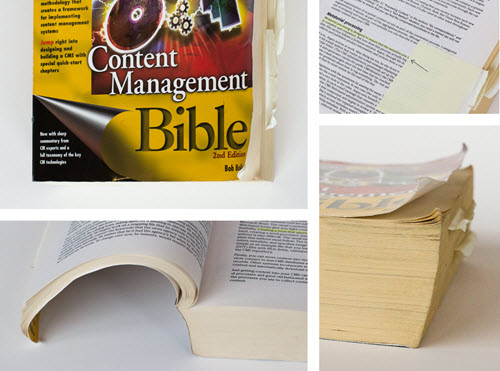
Throughout this ordeal, I wrote all over it. A dozen highlighters died on the battlefields of this book. I dog-eared pages. To this day, it still has Post-It notes sticking out from the pages which have arrows pointing to something which I apparently thought was worthy of being pointed out. Standing vertically on my bookshelf, the pages are yellowed with age on one side, and the spine is concave on the other from days spent laying open on my desk.
This book itself tells a story. It clearly telegraphs the amount of time I spent with it on both first and subsequent readings. I still remembering finishing it, in fact, on a flight to Sioux Falls that was diverted to Kansas City due to a thunderstorm. Books this thick get hard to read when you’re too close to either cover, so I remember fumbling around with it in the seat of a CRJ-200 that was bucking back and forth due to turbulence. At the exact moment the plane touched down, I read the last paragraph and flopped back in my seat. I think I was sweating.
You’re just not going to get this from an ebook. Ebooks don’t wear out. They don’t tear. They don’t accumulate wounds. In the previous section, I made the point that ebooks neutralize the inherent physical nature of books, but they also neutralize the wear and tear that the book accumulates over time, and this wear and tear tells a story.
My grandparents were missionaries in Central Africa in the 1940s – my late mother was born in Ethiopia in 1943, in fact. During this time, they owned a set of bibles that traveled with them from Africa to New Zealand and back more than once. These bibles were passed down to me, and I keep them on the nightstand next to my bed.
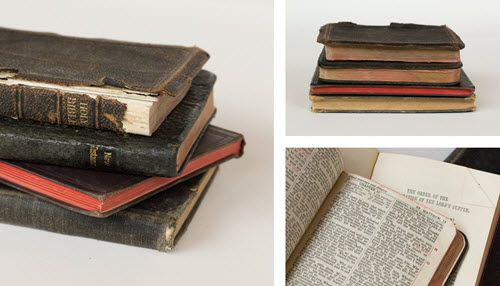
To look at these books is to know how much they mean to my family. They are coming to pieces, with faced black covers and brittle, yellowed pages. Notes are scribbled in the margins, and there’s an inscription inside the cover of one of them that I believe was written by my maternal grandmother to her father in the 1920s.
These bibles tell the story of my family’s faith. They tell the story of my family’s travel and service to that faith. Their value and testament go far beyond the words contained within them.
These bibles tell a story of their usage. By extension, that usage tells a story of their importance. And that tells you something about my family.
Third: The Book Itself is a Visible Vehicle for Human Connection
In his journalism textbook, A History of News, Mitchell Stephens writes about how information connects us:
Societies depend for their unity and coherence on a sense of group identity. […] a society too depends on the flow of a stream pf perceptions and sentiments from a shared perspective – in this case a societal perspective – to provide its members with day to day, minute to minute, reminders of the existence and the significance of the group. To think a society’s thoughts is to belong to that society. News provides the requisite set of shared thoughts.
As humans, we connect through information in the form of “shared thoughts.” If you consider a Venn diagram with two circles – what I know and what you know – the space where they overlap is what we have in common and where we connect with each other.
Why do we talk about the weather in elevators? Because we know our spheres of information will overlap there. The weather is the one guaranteed thing that we know we’ll have in common with other people. The weather represents safety and even intimacy. I may not know anything about you, but in the middle of a heat wave I know that you’re probably as uncomfortable as I am, so let’s talk about that because there’s intimacy there. We take comfort in the idea that other people share our information.
Books are information, they are ideas. And the book itself is a physical representation of that. When I see a book, I know it represents a sphere of information – a Venn circle that might overlap on my own. And when I see a book in your possession, I know that you have that circle. Any circle is a possibility that we might overlap.
When I visit your office, I will review your bookshelf. I’ll pull books out and look them over, both to satisfy my curiosity, but almost to signify that this information interests me, and there’s something we can connect through. We’ll talk about the books and the ideas they represent, and we’ll learn about each other in that process. I’ve had many scheduled meetings joyfully derailed by the presence of a book that unleashed a waterfall of conversation and – yes – intimacy.
Books that you possess – either by actually owning them, or being in their physical presence momentarily – say things about you. They provide context to your existence. They are an attachment point through which we can come together and bond over shared human experience.
But to experience these benefits, we have to see the book. We have to visually perceive that circle to know that it might overlap on ours. For that purpose, the book itself – as a simple physical object that occupies visual space – is unrivaled.
I will never stumble across the Kindle edition of your book unless I’m watching over your shoulder as you scroll through My Library. But someday, I hope we have coffee next to your bookshelf and nestled among the stacks of books in your office. In that context, there’s a rich world of opportunity for you and I to come together.
Fourth: The Book Itself is a Trophy of Knowledge
I visited the Library of Congress a few months ago. I don’t mean to put too dramatic a point on it, but the experience bordered on spiritual.
The building itself is gorgeous, but there was just something magical about being in a place devoted to the preservation of books. I spent some time in the viewing area overlooking the main reading room (which, it must be said, looks like something out of a Harry Potter movie), and through arches in the back, you can catch a glimpse of miles and miles of stacks.
I’m not a souvenir guy, but I had to have something to remember the experience by. Perhaps “remember” is the wrong word – commemorate, maybe? I needed something to remind myself that I had been there and that this mattered to me.
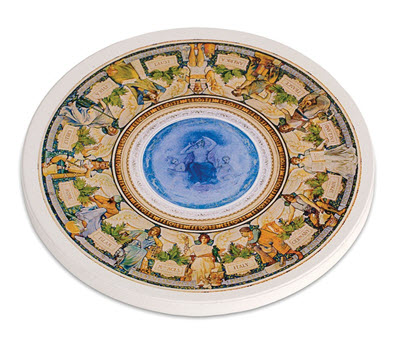
I bought a coaster. It’s a gorgeous piece of ceramic that depicts the art on the inside of the dome in the reading room. I have this coaster on the side table next to my reading chair. I put my coffee on it every morning, and each time, I remember the couple hours I spent in the Library of Congress.
In a generic sense, a trophy is a physical token commemorating an event or accomplishment. A kid gets a shiny, plastic contraption for winning a baseball championship. Big game hunters have “trophy rooms” where they mount animal heads to commemorating their prowess on the open range. These things occupy physical space to assist us in remembering and remind us that these things mattered to us.
The book itself serves that same purpose. A bookshelf is a trophy case, representing knowledge, experience, and adventure. There’s a mark of accomplishment, clearly, but also the representation that these things matter to me. I read these books and this means so much that I will sacrifice this physical space to commemorate that event because that activity is worth more to me that the space this object occupies.
There’s a cliched vision of the big game hunter, pouring himself a whiskey and settling back in his easy chair, eyes walking around the room from creature to creature. He examines each one, thinks back to that particular hunt, then smiles and takes a sip. If he has a companion, he might launch into a soliloquy about that one time back in the Serengeti, when he spent three days stalking a pride of lions.
The analogy is overdone, but there’s some level of truth there. I used to have a corner office, but quickly learned that all this means is that you have one less wall for a bookshelf, so I traded offices. A wall of my new office is dominated by a bookshelf, and I’ll often turn my chair towards it and run my eyes over the spines. Each one tells a story, and I don’t mind saying that I’m proud to have read them all. I’m passionate about what I do for a living, and I’ve invested hours in learning about it. This matters to me.
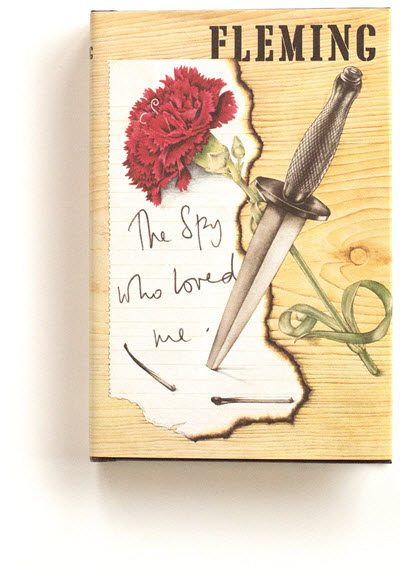
I’ve been a James Bond fan my entire life. I read all of Ian Fleming’s original novels in college, and I purchased a reproduction set of the originals from The Easton Press 20 years ago. I have them sitting on a bookshelf in my home. I keep meaning to re-read them all, but in truth, I haven’t touched them in years.
But they will continue to sit there because the experience they gave me is something I want to commemorate. The adventures Fleming took me on are things I want to remember and even celebrate. They are a physical token to remind myself of something which was important to me – not only my experience with the book, but even more abstract concepts like good writing, terse diction (Fleming wasn’t flowery), and some of the things 007 himself represents: single-minded service to country, courage in the face of danger, and a life spent in anonymous purpose.
All of that is bundled up and represented by those trophies. I think of these things whenever I look at the set. I probably don’t articulate the individual messages like I have here, but there’s a summation of them somewhere in my soul. It’s a happiness, a calmness, a sense of satisfaction. It bubbles to the surface whenever I see those books.
I read those. And it mattered.
The Book Itself is Art
I recently finished The Book by Keith Houston. It’s a historical examination of the book itself, starting with papyrus, through parchment, then paper, the concept of writing, illustration, printing, binding, and finally delivering us to the books we know today.
The design of The Book is deconstructed. Houston turns the physical item into meta-map to itself. He identifies all the elements of it, from things we know – the title, the table of contents – to things that we probably didn’t even know had names – a “recto running head,” for example. The first appearance of anything in his book is visually denoted and defined, with some of them so esoteric that they don’t make their first appearance until hundreds of pages in.

In the process, Houston draws attention to the glossary of terms invented to name the physical affordances of books. In the text of The Book he explains why those affordances exist. In the process, he develops the idea of the book itself as a physical embodiment of the conveyance of thousands of years of human history. The carrier of the shared intellectual achievements of an entire species.
Returning to Double Fold, Baker tells of the scholar G. Thomas Tanselle and his belief the book itself as a treasure, which should be “placed in the charge of those who are experienced in the car of artifacts” (from Tanselle’s collection of essays: Literature and Artifacts).
Baker writes:
Libraries … since they own, whether they like it or not, collections of physical artifacts, must aspire to the condition of museums. All their books are treasures, in a sense; the general stacks become a short of comprehensive rare-book room – not staffed and serviced as rare-book rooms are, obviously, but understood as occupying the same kind of unreformattable sensorium.
The book itself is a physical embodiment of an idea, designed and packaged to provoke thought and stir emotion.
In closing, I ask: how is that not art?